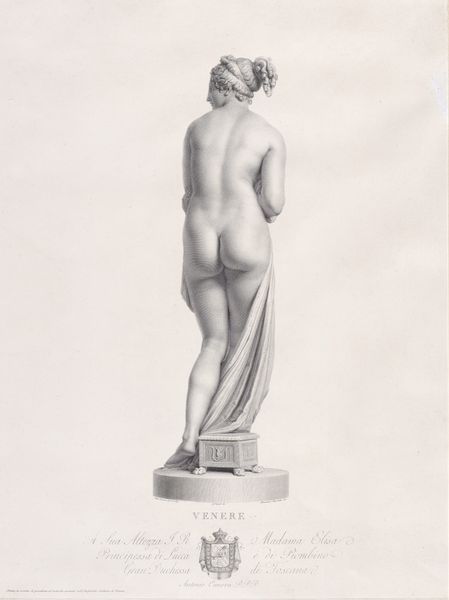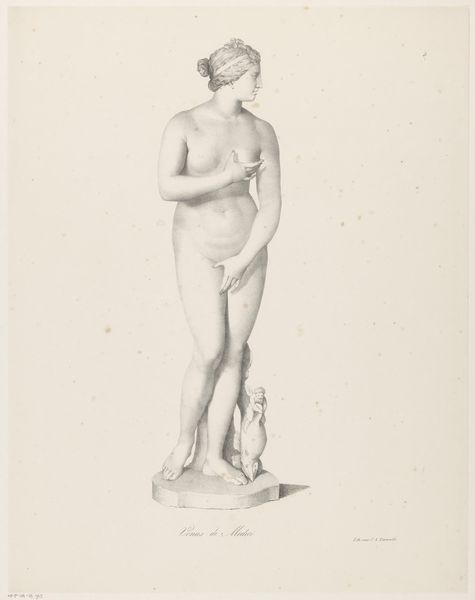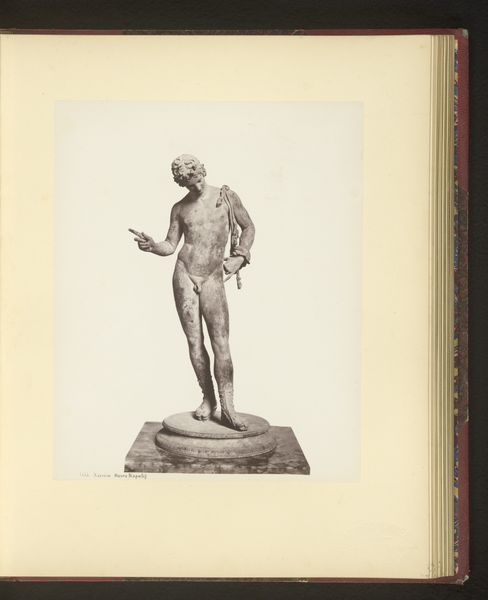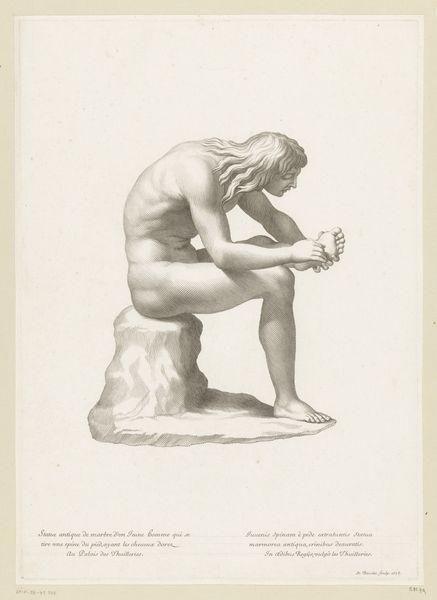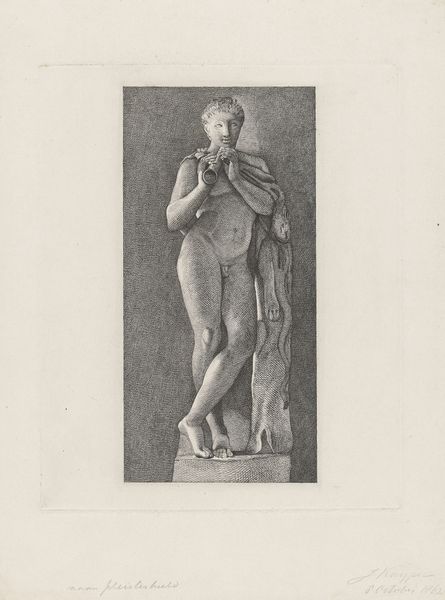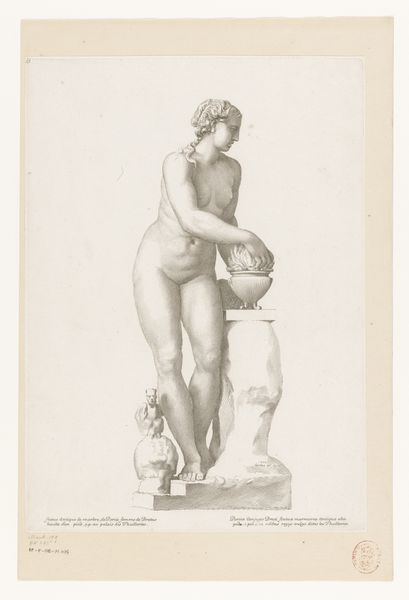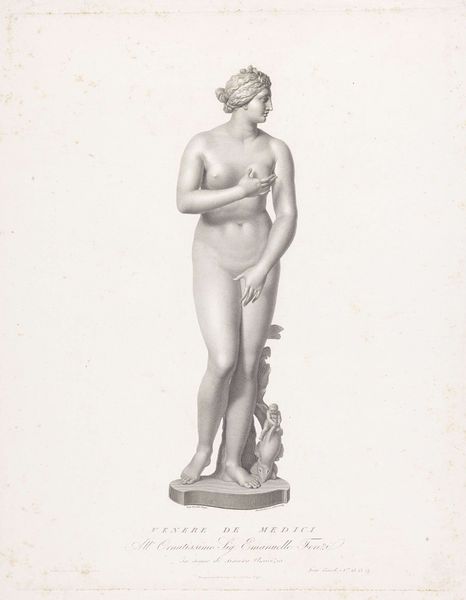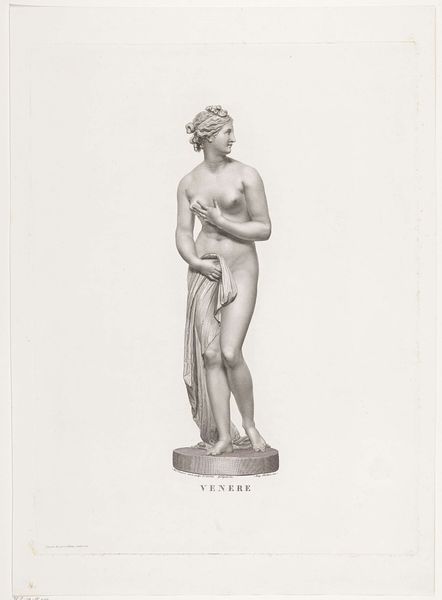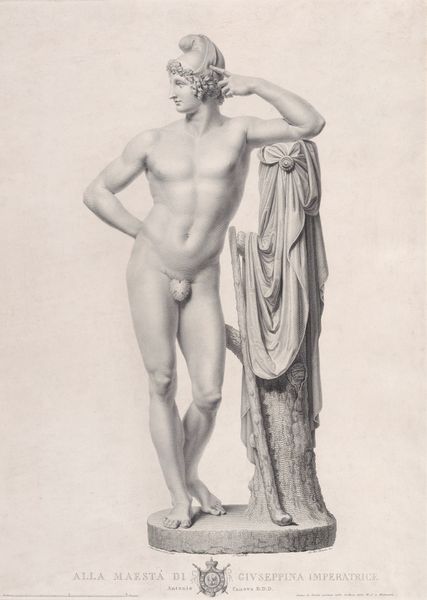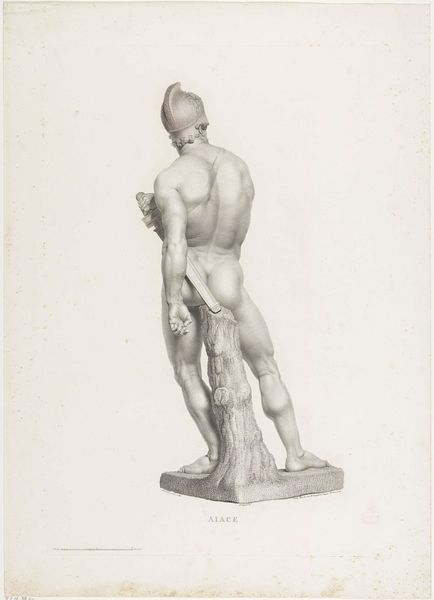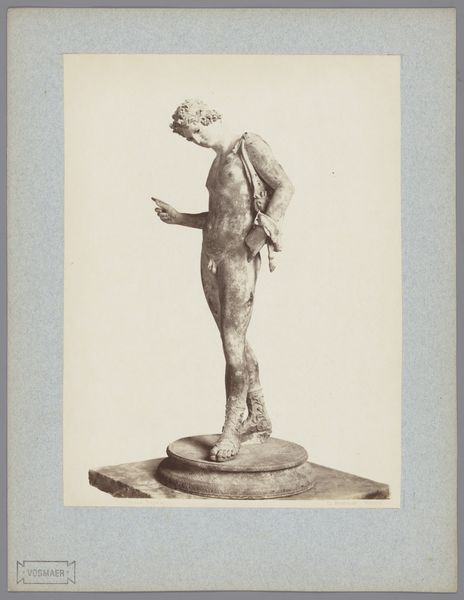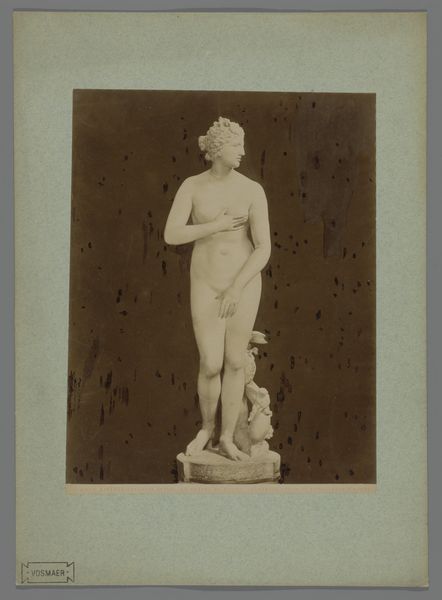
drawing, print, paper, engraving
#
drawing
#
neoclacissism
# print
#
classical-realism
#
paper
#
form
#
nude
#
engraving
Dimensions: 540 x 408 mm (plate); 858 x 620 mm (sheet)
Copyright: Public Domain
Editor: Here we have "Venus, Back View, from Oeuvre de Canova," a print made around 1817 by Antonio Canova. It’s a classical, delicate nude study. I'm curious to know what you make of it. How do you interpret this work? Curator: This image allows us to unpack several complex threads within art history and its intersection with societal power dynamics. The depiction of Venus from behind, a subtle act of objectification, was a common trope during the Neoclassical period. Consider how this imagery, while seemingly celebrating the female form, often served the male gaze, reinforcing societal norms. What is missing or overlooked when a woman is seen from the back? Editor: That's interesting. I hadn't considered the male gaze aspect so directly. The composition is very centered and feels quite academic, so the idea of an underlying power structure is unsettling. Curator: Exactly. And it’s crucial to analyze how this type of representation impacts contemporary perceptions of women. The sculpture is placed upon a pedestal – who does it benefit to idolize or commodify her? Also, who is allowed to look at this artwork, and why? The creation and accessibility of art always imply power dynamics. Editor: I see what you mean. It reframes the print within a discussion about gender and spectatorship, prompting questions of access and agency. It’s uncomfortable, yet necessary, to consider. Curator: Precisely. Art like this serves as a visual text, reflecting and shaping cultural values. Looking critically, we question, subvert, and begin to rewrite our historical narratives toward a more inclusive future. What did you get from it? Editor: I am struck by the complexity of what appears to be a simple image. Looking through a contemporary lens, it underscores the importance of understanding power dynamics inherent in artistic representation. Curator: I concur, and this understanding empowers us to approach all art, new and old, with greater nuance and responsibility.
Comments
No comments
Be the first to comment and join the conversation on the ultimate creative platform.
